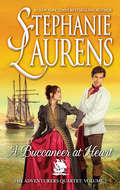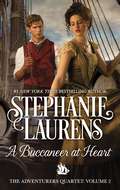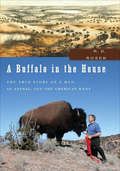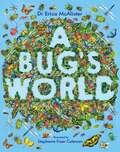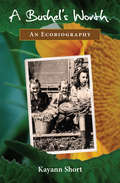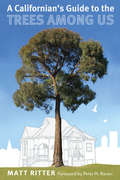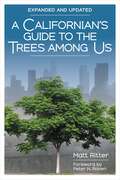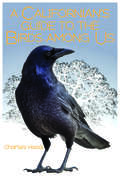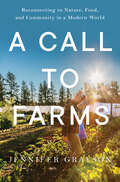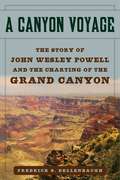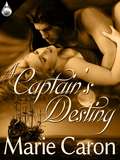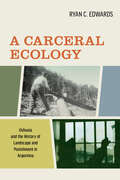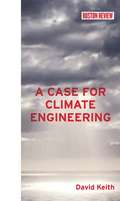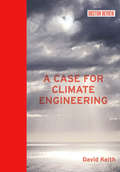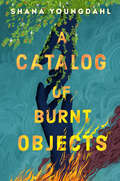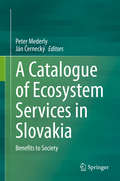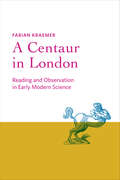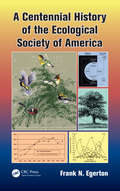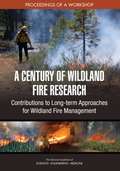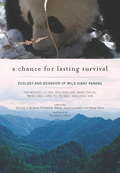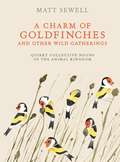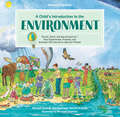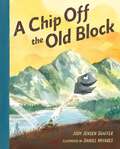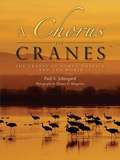- Table View
- List View
A Buccaneer at Heart
by Stephanie Laurens<P>Unexpected love-plus passion, intrigue, and danger-challenge our hero to embrace his true nature. <P>#1 New York Times bestselling author Stephanie Laurens continues THE ADVENTURERS QUARTET, a riveting blend of Regency-era high seas adventure, a mystery shrouded in the heat of tropical jungles, and the passionate romances of four couples and their unexpected journeys into love. <P>After a decade of captaining diplomatic voyages for Frobisher Shipping, alongside covert missions for the Crown, Captain Robert Frobisher decides that establishing a home-with hearth and wife-should be his next challenge. But an unexpected mission intervenes. Although Robert sees himself as a conservative businessman-cum-diplomat and this mission is far from his usual sphere, it nevertheless falls within the scope of his abilities. As matters are urgent, he agrees to depart for West Africa forthwith. <P>To Robert, his way forward is clear: Get to Freetown, determine the location of a slavers' camp, return to London with the information, and then proceed to find himself a wife. Already in Freetown, Miss Aileen Hopkins is set on finding her younger brother Will, a naval lieutenant who has mysteriously disappeared. Find Will and rescue him; determined and resolute, Aileen is not about to allow anyone to turn her from her path. <P>But all too quickly, that path grows dark and dangerous. And then Robert Frobisher appears and attempts to divert her in more ways than one. Accustomed to managing diplomats and bureaucrats, Robert discovers that manipulating a twenty-seven-year-old spinster lies outside his area of expertise. Prodded by an insistent need to protect Aileen, he realizes that joining forces with her is the surest path to meeting all the challenges before him-completing his mission, keeping her safe, and securing the woman he wants as his wife. But the villains strike and disrupt their careful plans-leaving Robert and Aileen no choice but to attempt a last throw of the dice to complete his mission and further her brother's rescue. <P>Compelled to protect those weaker than themselves and bring retribution to a heartless enemy, they plunge into the jungle with only their talents and inner strengths to aid them-and with the courage of their hearts as their guide. The first voyage is one of exploration, the second one of discovery. The third journey brings maturity, while the fourth is a voyage of second chances. Continue the journey and follow the adventure, the mystery, and the romances to the cataclysmic end. <P><b>A New York Times Bestseller</b>
A Buccaneer at Heart: The Adventurers Quartet (The Adventurers Quartet #2)
by Stephanie LaurensOnly from #1 New York Times bestselling author STEPHANIE LAURENS, the second story of THE ADVENTURERS QUARTET, where Regency-era intrigue, danger, romance and passion abound.A secret mission… After a decade leading diplomatic voyages and covert missions for the Crown, Captain Robert Frobisher decides that establishing a home—with hearth and wife—should be his next challenge. But when an urgent summons arrives, Robert puts his wishes aside and agrees to set sail immediately. His goal is clear: get to Freetown, determine the location of a slavers’ camp and return to London with the information. A distracting complication… In Freetown, Miss Aileen Hopkins is determined to find her brother Will, a naval lieutenant who has mysteriously disappeared, and she will not allow anyone to turn her from her path. But all too quickly, that path grows dark and dangerous. And then Robert Frobisher appears and attempts to divert her in more ways than one. An unexpected alliance… Joining forces with Aileen, Robert vows to complete his mission and secure the woman he wants as his wife. Compelled to protect the innocent and bring retribution to a heartless enemy, they plunge into the jungle with only each other to rely on, and with the courage of their hearts as their guide. Follow THE ADVENTURERS as they continue their voyages across the high seas to the riveting and triumphant conclusion.Originally published in 2016
A Buffalo in the House: The True Story of a Man, an Animal, and the American West
by R. D. RosenFrom a #1 New York Times–bestselling author, &“a heartwarming tale of bonding between people and animals&” (Booklist). A sprawling suburban house in Santa Fe is not the kind of home where a buffalo normally roams, but Veryl Goodnight and Roger Brooks are not your ordinary animal lovers. Over a hundred years after Veryl&’s ancestors, Charles and Mary Ann Goodnight, hand-raised two baby buffalo to help save the species from extinction, the sculptor and her husband adopt an orphaned buffalo calf of their own. Against a backdrop of the American West, A Buffalo in the House tells the story of a household situation beyond any sitcom writer&’s wildest dreams. Charlie has no idea he&’s a buffalo and Roger has no idea just how strong the bond between man and buffalo can be. In the historical shadow of the near-extermination of a majestic and misunderstood animal, Roger sets out to save just one buffalo—in a true story featuring &“one of the most memorable characters in recent nature writing&” (Publishers Weekly). &“More than a touching man-beast buddy tale . . . lovingly chronicles the history of an embattled species and its importance in the American West.&” —Entertainment Weekly &“Moving proof of the restorative powers of man&’s relationship with nature.&” —People
A Bug's World
by Erica McAlisterDid you know that...Flies can help us solve crimes?Spiders can be astronauts?Moths are the ultimate fashion designers?From making our food to keeping the planet clean and solving crimes, bugs come to our rescue every day. Often without us even realising!Discover the extraordinary things that bugs do for us - and how we can look after them too - in this vibrant gift book written by the Natural History Museum's senior entomologist.
A Bushel's Worth
by Kayann ShortIn this love story of land and family, Kayann Short explores her farm roots from her grandparents' North Dakota homesteads to her own Stonebridge Farm, an organic, community-supported farm on the Colorado Front Range where small-scale, local agriculture borrows lessons of the past to cultivate sustainable communities for the future."A Bushel's Worth is my favorite kind of nonfiction. Not only is it about many topics close to my heart-gardening, food, family-it is a beautifully told story, and a love story at that, centered around the love of a couple, their love for the land, and a community's love for a way of life. This book forever changed my perspective and awareness as I 'walk out' in my own garden."--Katrina Kittle, author, The Blessings of the Animals"A heartfelt meditation on farm, food, and family. A Bushel's Worth tells a love story of the land and a life spent caring for it."-Hannah Nordhaus, author, The Beekeeper's Lament: How One Man and Half a Billion Honeybees Help Feed America"Kayann Short shares a passionate and often lyrical account of how she and her husband John took their first brave steps toward revitalizing a small Colorado farm and with it their lives and the community they drew around them. This is a book about how agriculture continues to create culture when it is practiced with generosity, creativity and attention. It is an inspiring story, a gift for all of us, both on and off the farm, who are trying to learn how to slow down our frenzied lives so that we may give ourselves to what really matters."-Gregory Spaid, author, Grace: Photographs of Rural America"With a companionable mix of literary and earthy sensibilities, Kayann Short writes with graceful, ferocious attentiveness [and] finds reassurance for herself and her modern family in "the old wisdom of the fields."-John Calderazzo, author, Rising Fire: Volcanoes & Our Inner Lives"[A] beautifully written and sensually rich 'ecobiography' of farm life...A Bushel's Worth is a loving natural history - of a farm, a marriage, and a way of life that has changed interestingly and dramatically over just a few generations."-Jane Shellenberger, author, Organic Gardener's Companion: Growing Vegetables in the West"The book is a substantial meal...as much about growing community as it is about growing food, and it leaves the reader with a generous bushel of instruction and inspiration on both counts."-Susan Becker, Director, Boulder Public Library Oral History Program"A Bushel's Worth: An Ecobiography eloquently depicts humans and nature coexisting and mutually benefiting not only in theory, but in actuality...where people treat each other respectfully as they gently work on and with the land."-Shelly Eberly, National Outings Leader, Sierra Club
A Calgary Album: Glimpses of the Way We Were
by Mark Kozub Janice KozubBefore becoming the oil capital of the nation, Calgary was a nineteenth-century boomtown in the heart of Alberta. The roots of great prosperity were growing, despite the fact that politicians and the general public believed the West was best left to the trapper and trader. Nurtured by a sense of vision and the sweat of good old-fashioned hard work, Calgary grew, and has now blossomed into a world-class cosmopolitan city noted for its burgeoning oil and gas industry, its famed Calgary Zoo, and of course, the Stampede. A Calgary Album is a sentimental journey into a cattle town that grew to be so much more. Through sixty-five glorious black and white photographs and engaging storytelling, the authors take the reader back to the time of the "real" cowboys, to the days when the streetcar seemed like science fiction, through the Depression, the great wars, the times of boom, bust, and recovery. We revisit the movers, the shakers, and the honourable everyday people who turned this "cow town" into a city worth bragging about.
A Californian's Guide to the Trees among Us
by RitterWe bring the strength and beauty of the natural world into our urban landscapes by planting trees, and California is blessed with a rich horticultural history, visible in an abundance of cultivated trees that enrich our lives with extraordinary color, bizarre shapes, unusual textures, and unexpected aromas. A Californian’s Guide to the Trees among Us features over 150 of California’s most commonly grown trees. Whether native or cultivated, these are the trees that muffle noise, create wildlife habitats, mitigate pollution, conserve energy, and make urban living healthier and more peaceful. Used as a field guide or read with pleasure for the liveliness of the prose, this book will allow readers to learn the stories behind the trees that shade our parks, grace our yards, and line our streets. Rich in photographs and illustrations, overflowing with anecdote and information, A Californian’s Guide to the Trees among Us opens our eyes to a world of beauty just outside our front doors.
A Californian's Guide to the Trees among Us: Expanded and Updated
by Matt RitterNow expanded and updated: Californians’ favorite reference book to trees in our everyday lives &“Anyone who is curious about trees is sure to find education and inspiration in these pages.&”—David Allen Sibley, author of The Sibley Guide to Trees and The Sibley Guide to Birds For more than ten years, A Californian’s Guide to the Trees among Us has taught Californians the what, why, and how of trees in our cities and towns. This edition has been updated by the author to reflect new trends in urban forestry, with a revised introduction, updated taxonomy and nomenclature, and more than ten additional species featured. Matt Ritter introduces us to over 160 of California’s most commonly grown urban trees in this expanded edition of his best-selling book. Whether native or cultivated, these are the trees that muffle noise, create wildlife habitats, mitigate pollution, conserve energy, and make urban living healthier and more peaceful. Used as a field guide or read with pleasure for the liveliness of the prose, this book will allow readers to learn the stories behind the trees that shade our parks, grace our yards, and line our streets. Rich in photographs and illustrations, overflowing with anecdote and information, A Californian’s Guide to the Trees among Us opens our eyes to a world of beauty just outside our front doors.
A Californian’s Guide to the Birds among Us
by Charles HoodAs its sister title, A Californian's Guide to the Trees among Us, did for arboreal varieties, this new guidebook introduces casual birders to 120 of California's most easily seen bird species—native and exotic alike—as found in a mix of urban, suburban, and traditionally natural habitats. Full-color images and clear, direct descriptions make identification easy, and author Charles Hood supplements the essential information with surprising facts and trivia, including endangered-species recovery stories and the world record for grasshoppers eaten by one flycatcher in a single day. In sections addressing which gear to buy, where to go birdwatching, and how to read a birdsong transcription, Hood encourages readers to take ownership of their experiences, no matter their level of ornithological expertise. This accurate, lively, and even quotable guide will inspire people to notice nature more closely and find joy in interacting with the astounding diversity of avian life in California.
A Call to Farms: Reconnecting To Nature, Food, And Community In A Modern World
by Jennifer GraysonHope for the future lies with a new generation of regenerative farmers. Within a decade, nearly half of all American farmland will change hands as an older generation of farmers steps aside. In their place, a groundswell of new growers will face numerous challenges, including soil degradation, insufficient income, and investors devouring farmland at a staggering pace. These new farmers are embracing regenerative agriculture—the holistic approach to growing food that restores the soil and biodiversity—in the movement to reclaim our health and the planet’s. But can their efforts help reverse an epidemic of diet-related disease, food inequality, and even climate change? To answer that question and more, award-winning journalist Jennifer Grayson embedded herself in a groundbreaking farmer training program, then embarked on this investigative journey. The diverse array of farmers, graziers, and food activists whom she profiles here are working toward better, more sustainable foodways for all. From a one-acre market garden in Oregon to activists reviving food sovereignty in South Carolina, A Call to Farms tells the captivating story of these new agrarians finding hope and purpose in reconnecting to the land and striving to improve the future of American food.
A Canyon Voyage: The Story of John Wesley Powell and the Charting of the Grand Canyon
by Frederick DellenbaughIn 1871, seventeen-year-old Frederick Dellenbaugh began a great adventure when he joined Major John Wesley Powell and a crew of scientists on Powell's second exploration trip down the Colorado River and into the Grand Canyon. These were the last great stretches of land and river still unknown in the continental United States. Powell, Dellenbaugh, and the rest of the group spent years exploring the Grand Canyon country, noting its geologic features, and observing its Native Americans inhabitants A Canyon Voyage chronicles this historic expedition, and provides a detailed account of Powell and Dellenbaugh’s historic journey. Through his account the reader can pass through the rapid currents of the Green and Colorado Rivers; climb the crags of the Grand Canyon; trade with the original Native American inhabitants of the Southwest; and witness the picturesque flora and fauna of the area. Brimming with vivid imagery and unbridled adventure, A Canyon Voyage is a perfect read for every armchair adventurer.
A Captain's Destiny
by Marie CaronA roguish sea captain and a lady of privilege. They come from different worlds. But when his life and freedom are threatened, she'll risk it all to save him. Can the love of one woman set a man free and lead him to his future? A spicy, new romance from author Marie Caron, A Captain's Destiny is a passionate story of undying faith and the power of love.Before being accused of a crime he did not commit, Jack O'Bannon, sea captain and handsome rogue, had firmly believed he was the master of his own destiny. But the chain of events that is set in motion will make him question everything--and everyone--he's ever believed in. Will the love of one woman be enough to free him and guide him to his future?Lady Katherine Conlon had led a sheltered life, protected by everyone around her, including a boy in her father's employ. Never did she dream that one day she would return the favor, saving the boy and loving him as only a woman can love a man. But can she overcome the differences between them and take control of her own destiny?Content Notes: Spicy
A Carceral Ecology: Ushuaia and the History of Landscape and Punishment in Argentina
by Ryan C. EdwardsCloser to Antarctica than to Buenos Aires, the port town of Ushuaia, Argentina is home to a national park as well as a museum that is housed in the world’s southernmost prison. Ushuaia’s radial panopticon operated as an experimental hybrid penal colony and penitentiary from 1902 to 1947, designed to revolutionize modern prisons globally. A Carceral Ecology offers the first comprehensive study of this notorious prison and its afterlife, documenting how the Patagonian frontier and timber economy became central to ideas about labor, rehabilitation, and resource management. Mining the records of penologists, naturalists, and inmates, Ryan C. Edwards shows how discipline was tied to forest management, but also how inmates gained situated geographical knowledge and reframed debates on the regeneration of the land and the self. Bringing a new imperative to global prison studies, Edwards asks us to rethink the role of the environment in carceral practices as well as the impact of incarceration on the natural world.
A Case for Climate Engineering
by David KeithClimate engineering -- which could slow the pace of global warming by injecting reflective particles into the upper atmosphere -- has emerged in recent years as an extremely controversial technology. And for good reason: it carries unknown risks and it may undermine commitments to conserving energy. Some critics also view it as an immoral human breach of the natural world. The latter objection, David Keith argues in "A Scientist's Case for Climate Engineering," is groundless; we have been using technology to alter our environment for years. But he agrees that there are large issues at stake. A leading scientist long concerned about climate change, Keith offers no na've proposal for an easy fix to what is perhaps the most challenging question of our time; climate engineering is no silver bullet. But he argues that after decades during which very little progress has been made in reducing carbon emissions we must put this technology on the table and consider it responsibly. That doesn't mean we will deploy it, and it doesn't mean that we can abandon efforts to reduce greenhouse gas emissions. But we must understand fully what research needs to be done and how the technology might be designed and used. This book provides a clear and accessible overview of what the costs and risks might be, and how climate engineering might fit into a larger program for managing climate change.
A Case for Climate Engineering (Boston Review Books)
by David KeithA leading scientist argues that we must consider deploying climate engineering technology to slow the pace of global warming. Climate engineering—which could slow the pace of global warming by injecting reflective particles into the upper atmosphere—has emerged in recent years as an extremely controversial technology. And for good reason: it carries unknown risks and it may undermine commitments to conserving energy. Some critics also view it as an immoral human breach of the natural world. The latter objection, David Keith argues in A Scientist's Case for Climate Engineering, is groundless; we have been using technology to alter our environment for years. But he agrees that there are large issues at stake. A leading scientist long concerned about climate change, Keith offers no naïve proposal for an easy fix to what is perhaps the most challenging question of our time; climate engineering is no silver bullet. But he argues that after decades during which very little progress has been made in reducing carbon emissions we must put this technology on the table and consider it responsibly. That doesn't mean we will deploy it, and it doesn't mean that we can abandon efforts to reduce greenhouse gas emissions. But we must understand fully what research needs to be done and how the technology might be designed and used. This book provides a clear and accessible overview of what the costs and risks might be, and how climate engineering might fit into a larger program for managing climate change.
A Catalog of Burnt Objects
by Shana YoungdahlThe powerful story of a girl struggling to figure out her estranged brother, a new love, and her own life just as wildfires beset her small California town—perfect for fans of Nina LaCour and Kathleen GlasgowSeventeen-year-old Caprice wants to piece her family back together now that her older brother has returned home, even as she resents that he ever broke them apart. Just as she starts to get a new footing—falling in love for the first time, uncertainly mending her traumatized relationship with her brother, completing the app that will win her a college scholarship and a job in tech—wildfires strike Sierra, her small California town, forcing her to reckon with a future that is impossible to predict.A love story of many kinds, and a reflection of the terrifying, heartbreaking Camp Fire that destroyed Paradise, California, where the author grew up, this is a tale that looks at what is lost and discovers what remains, and how a family can be nearly destroyed again and again, and still survive.&“Gorgeous worldbuilding [and] depth . . . Swoony [and] unputdownable.&” —BCCB"Smart and moving . . . beautiful." —Kirkus (starred review)"Eloquent . . . well-drawn, realistic . . . Goes straight to the heart.&” —Booklist (starred review)"A thoughtful, hopeful tight-rope walk between first loss and first love." —Daisy Garrison, author of Six More Months of June"Heart-wrenching and lyrical." —Jeff Zentner, author of In The Wild Light&“You can&’t help but fall in love with the world inside this book.&” —Helena Fox, award-winning author of How It Feels to Float
A Catalogue of Ecosystem Services in Slovakia: Benefits to Society
by Peter Mederly Ján ČerneckýThis book provides the first comprehensive assessment of ecosystem services (ES) for the territory of the Slovak Republic. Although the ES approach is widely used for the evaluation of the benefits of natural capital and biodiversity for people, this book has a unique character. It provides an assessment of 18 individual ES, which are divided into three main groups - provisioning, regulatory/supporting and cultural ES. For each of ES, a brief theoretical and methodological overview is given, followed by spatial assessment based on own original methodology and dataset of 40 map layers. Besides, an evaluation of main ES groups and overall ES assessment is realized. This book emphasizes the key role of nature protection areas, large areas of forest ecosystems and mountain and sub-mountain areas, for the preservation of the various functions of the healthy landscape and ecosystems. The complexity of the book guarantees its usefulness - not only as the knowledge base for the territory of Slovakia but also as the methodological tool for worldwide researchers.
A Centaur in London: Reading and Observation in Early Modern Science (Information Cultures)
by Fabian KraemerA nuanced reframing of the dual importance of reading and observation for early modern naturalists.Historians traditionally argue that the sciences were born in early modern Europe during the so-called Scientific Revolution. At the heart of this narrative lies a supposed shift from the knowledge of books to the knowledge of things. The attitude of the new-style intellectual broke with the text-based practices of erudition and instead cultivated an emerging empiricism of observation and experiment. Rather than blindly trusting the authority of ancient sources such as Pliny and Aristotle, practitioners of this experimental philosophy insisted upon experiential proof. In A Centaur in London, Fabian Kraemer calls a key tenet of this master narrative into question—that the rise of empiricism entailed a decrease in the importance of reading practices. Kraemer shows instead that the early practices of textual erudition and observational empiricism were by no means so remote from one another as the traditional narrative would suggest. He argues that reading books and reading the book of nature had a great deal in common—indeed, that reading texts was its own kind of observation. Especially in the case of rare and unusual phenomena like monsters, naturalists were dependent on the written reports of others who had experienced the good luck to be at the right place at the right time. The connections between compiling examples from texts and from observation were especially close in such cases. A Centaur in London combines the history of scholarly reading with the history of scientific observation to argue for the sustained importance of both throughout the Renaissance and provides a nuanced, textured portrait of early modern naturalists at work.
A Centennial History of the Ecological Society of America
by Frank N. EgertonCelebrating its 100th anniversary in 2015, the Ecological Society of America (ESA) is the largest professional society devoted to the science of ecology. A Centennial History of the Ecological Society of America tells the story of ESA's humble beginnings, growing from approximately 100 founding members and a modest publication of a few pages to a m
A Century of Wildland Fire Research: Proceedings of a Workshop
by Engineering Medicine National Academies of SciencesAlthough ecosystems, humans, and fire have coexisted for millennia, changes in geology, ecology, hydrology, and climate as well as sociocultural, regulatory, and economic factors have converged to make wildland fire management exceptionally challenging for U.S. federal, state, and local authorities. Given the mounting, unsustainable costs and difficulty translating existing wildland fire science into policy, the National Academies of Sciences, Engineering, and Medicine organized a 1-day workshop to focus on how a century of wildland fire research can contribute to improving wildland fire management. This publication summarizes the presentations and discussions from the workshop.
A Chance for Lasting Survival
by David Garshelis Wang Dajun Richard B. Harris William J. Mcshea Pan WenshiFrom 1984 through 1995 a small band of ecologists led by Pan Wenshi from Peking University conducted a study of wild giant pandas in the Qinling Mountains of Shaanxi Province. This project was the first Chinese-led conservation project in China and was conducted during a significant transition period in Chinese history, as the country opened its society and science to the world. The project focused on behavioral observation of wild giant pandas, but evolved to include physiology, nutrition, ecology, land-use policy, and population biology as the staff became more aware that the issues with captive pandas (assisted reproduction, unusual diet, and genetic inbreeding) were not the most critical to survival of wild populations. It is evident in this work that, as the scientists gained knowledge, they came to see giant panda conservation as wrapped in landscape ecology and human/wildlife interactions. The group was seminal in the Chinese government's enactment of a logging ban to their study area by advocating for pandas at the national level. The project was summarized in a 2001 volume, but its publication in Mandarin limited its influence on the greater conservation community. This English version of the original work translates, condenses, and refines the original volume, with added contextual chapters on the importance of this volume and how our understanding of giant panda conservation is shaped by this pioneering field work.
A Charm of Goldfinches and Other Wild Gatherings: Quirky Collective Nouns of the Animal Kingdom
by Matt Sewell"Most groups of wildlife can be described as a flock, herd, or shoal—but where is the fun in ending there?" — from the IntroductionWhether you're an animal lover or a grammar geek, illustrator Matt Sewell has the perfect menagerie of beasts (and beast-related terms) for your reading pleasure. Along with fifty-five gorgeous color illustrations, Sewell presents the unexpected collective nouns used to describe groups of animals on land, in the air, and in the water. Discover the secret behind a "sleuth of bears," keep your eyes open for a "watch of nightingales," and learn something new about a "school of whales." Illustrated in inimitable watercolor, this book makes a great gift for nature and art lovers everywhere.
A Child's Introduction to the Environment: The Air, Earth, and Sea Around Us -- Plus Experiments, Projects, and Activities YOU Can Do to Help Our Planet! (A Child's Introduction Series)
by Michael Driscoll Dennis DriscollExplore the water, land, and air around us with this entertaining and informative look at our magnificent planet—and learn how your experiments, activities, and everyday actions can help save the environment. This book looks at the wide variety of ecosystems and environmental regions of the Earth, from deserts and forests, to cities and farms, to oceans and ice caps, as well as the atmosphere, weather, energy sources, plants, and animals of each area. Michael Driscoll and professor of meteorology Dennis Driscoll explain the changes to our planet that are currently taking place, including rising temperatures and sea levels, and the effects they can have on our environment. They also profile young environmental activists like Greta Thunberg and Isra Hirsi, and highlight important, everyday actions such as water conversion and recycling that kids can do on their own or with their parents. Also included are fun projects and experiments to do at home like brewing sun tea, creating lightning, and making a smog detector. Packed with facts, experiments, and a removable poster with tips on how to save the planet, this comprehensive guide will inspire kids and their families to think about our planet in new ways and help keep it beautiful and healthy for years to come.
A Chip Off the Old Block
by Jody Jensen ShafferA plucky pebble shows true grit as he travels the country trying to find out if he fits in with any of his famous rock-formation relatives.Rocky comes from a long line of rock stars! Uncle Gibraltar, Aunt Etna, and Great-Grandma Half Dome are just some of the legendary rock formations he calls family. It's no wonder he wants to matter in a big way too--but it's not easy trying to get a foothold. Rocky gets tossed by The Wave and driven away at Devil's Tower--but he's determined not to allow these pitfalls to chip away at his confidence. Rather than feeling crushed, he keeps on rolling, hoping to become the rock-star he knows he's meant to be.
A Chorus of Cranes
by Paul A. Johnsgard Thomas D. Mangelsen"Accompanied by the stunning photography of Thomas D. Mangelsen, A Chorus of Cranes details the natural history, biology, and conservation issues surrounding the abundant sandhill crane and the endangered whooping crane in North America. Author Paul A. Johnsgard, one of the leading authorities on cranes and crane biology, describes the fascinating social behaviors, beautiful natural habitats, and grueling seasonal migrations that have stirred the hearts of people as far back as medieval times and garnered the crane a place in folklore and mythology across continents.Johnsgard has substantially updated and significantly expanded his 1991 work Crane Music, incorporating new information on the biology and status of these two North American cranes and providing abbreviated summaries on the other thirteen crane species of the world. The stories of these birds and their contrasting fates provide an instructive and moving history of bird conservation in North America. A Chorus of Cranes is a gorgeous and invaluable resource for crane enthusiasts, birders, natural historians, and conservationists alike."
